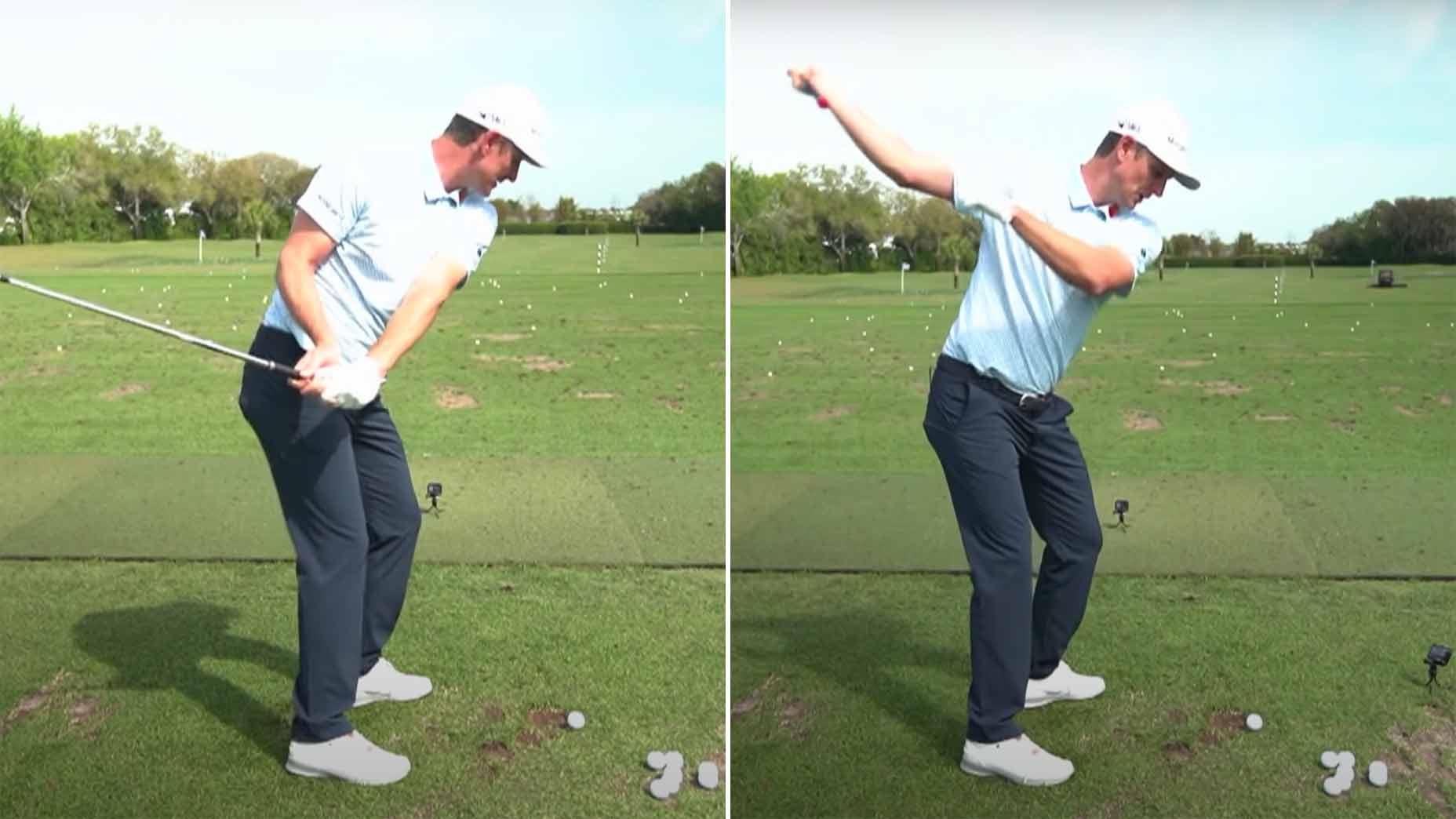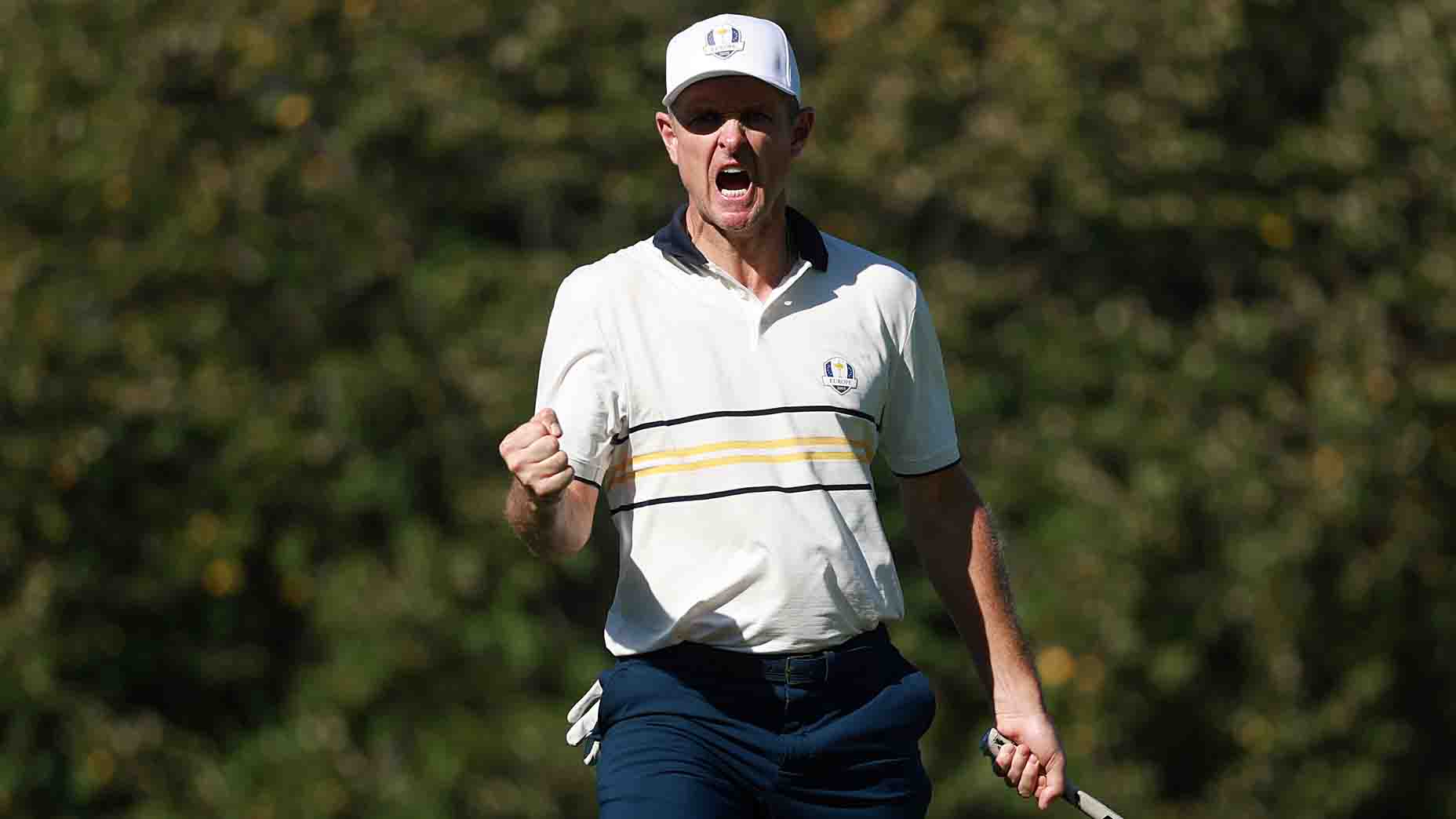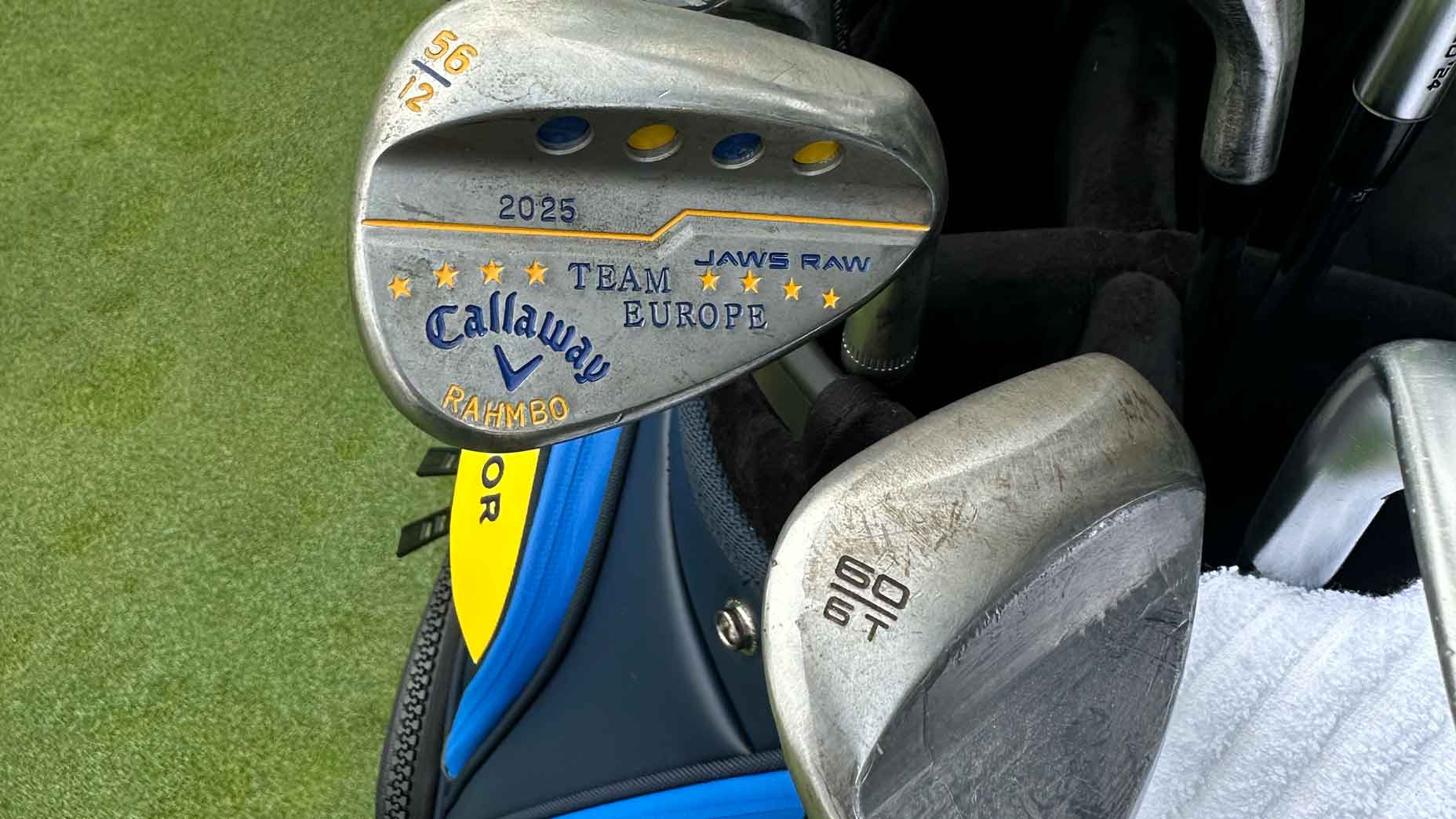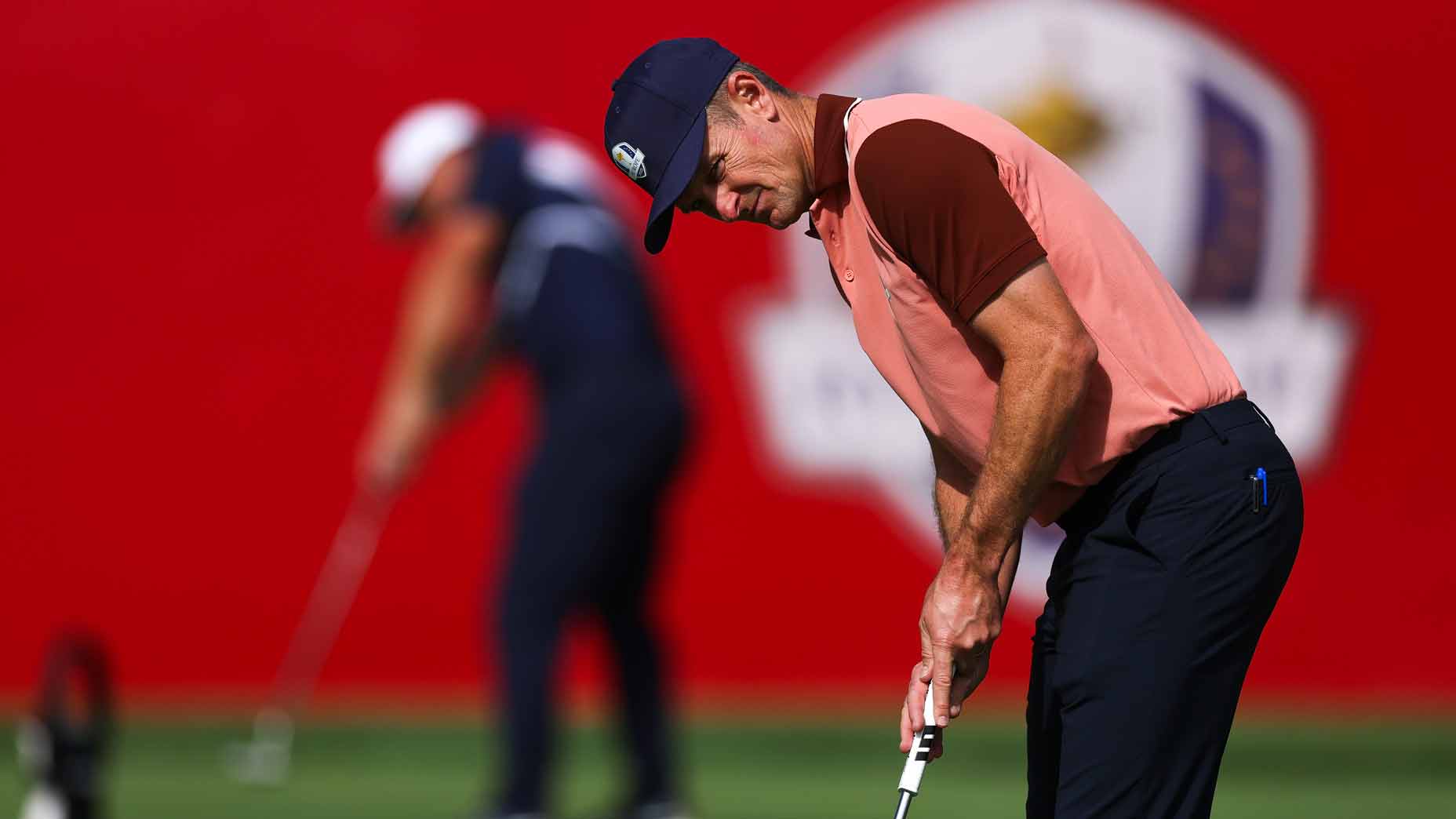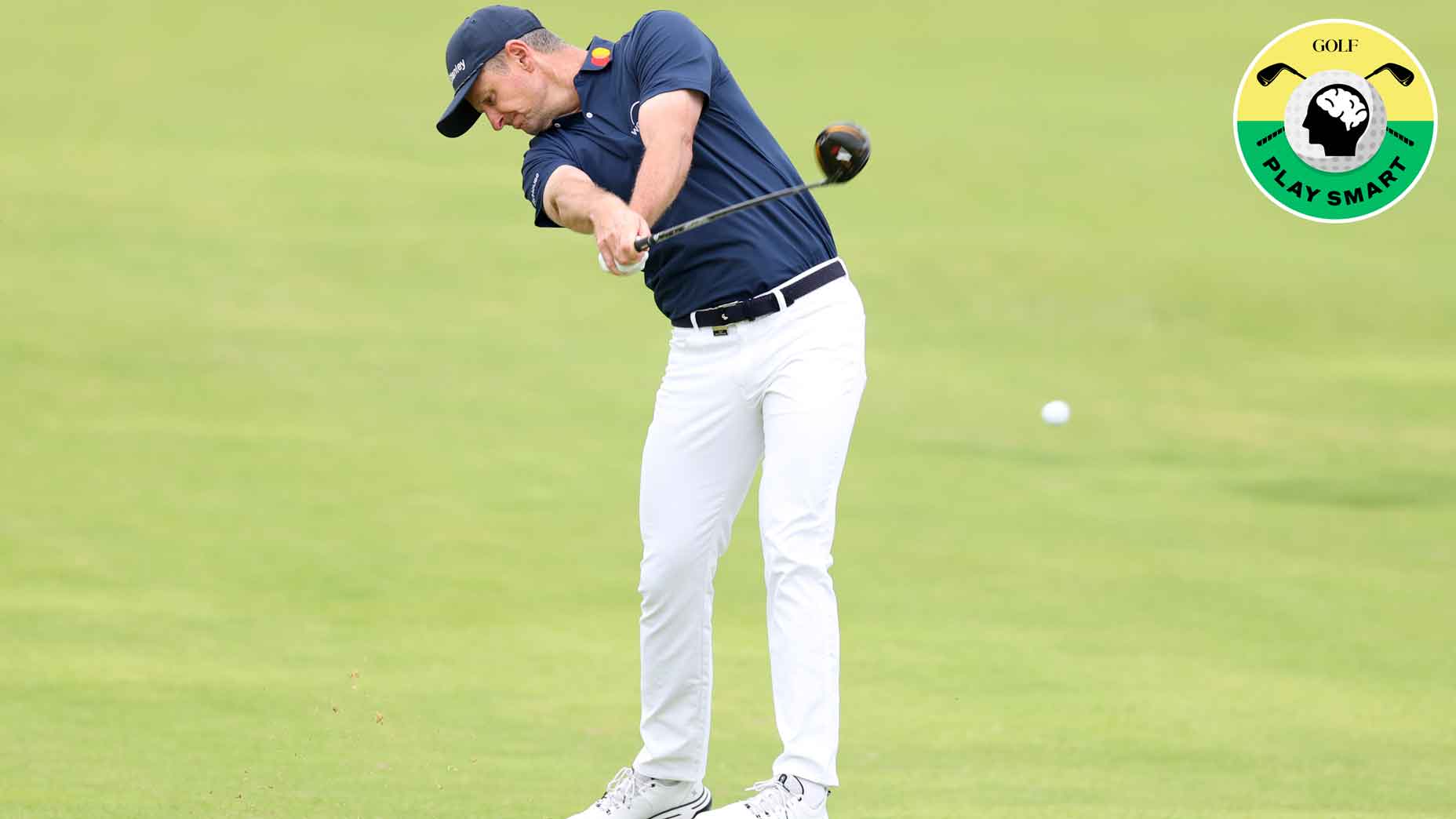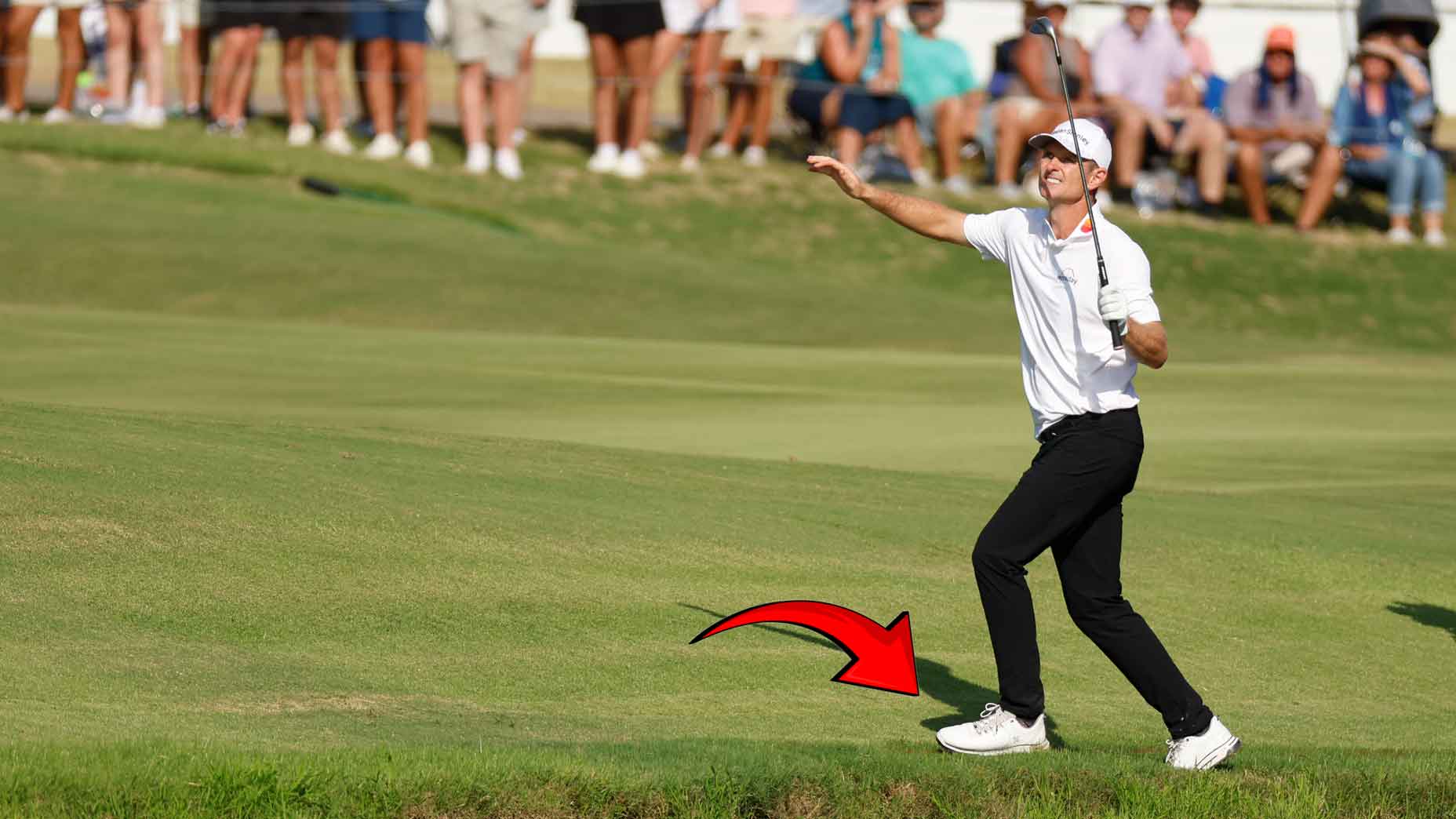Anyone who’s gone through a swing change knows that old habits are hard to kick. Your body becomes so used to swinging the club one way that doing anything different feels foreign. If you’re not consciously forcing yourself to implement the changes, muscle memory takes over and you revert to your old ways.
Over-exaggerating the new moves you’re trying to implement is one way to combat your ways of old. You can think — and even feel — like you’re swinging one way, but the reality can be much different. That’s why many players (even the pros) will practice with an exaggerated swing move — also known as feel vs. real.
Justin Rose is one such example of a pro who’s used the practice of feel vs. real to get his desired results. In the video below from 2020, he explains the exaggerated feel he’s going for, and how it helps him get his swing into the proper positions.
When Rose prepares to hit a shot, you can see him rehearsing an odd-looking move where he drops his hands well behind him. It looks far from the swing a pro would want to make, but he does it with good reason.
“That feel looks like I’m putting the club way behind me,” Rose says. “And the reason I’m doing that is I’m trying to create the sensation and the feel in my body that I need to hit the golf shot.”
By feeling that his hands are well behind him during the downswing, Rose is keep the clubhead from flinging outside his intended path on the way down.
“I don’t want the club to be here in delivery. That’s way too far behind me,” Rose says. “But as soon as I bring rotation to the target into play, this feel turns into [the correct] impact delivery. If I was to rehearse this, i.e. getting the club in front of me, but then I put in momentum with my turn, then that club is thrown out … Even though it looks like a technical thought, I’m not really looking at the exact positions, I’m just trying to create a feel.”
Making changes in the swing can be difficult, but sometimes feeling like you’re over-correcting is the answer. This will help you break your old habits and get you into the correct positions to hit the ball solid.
